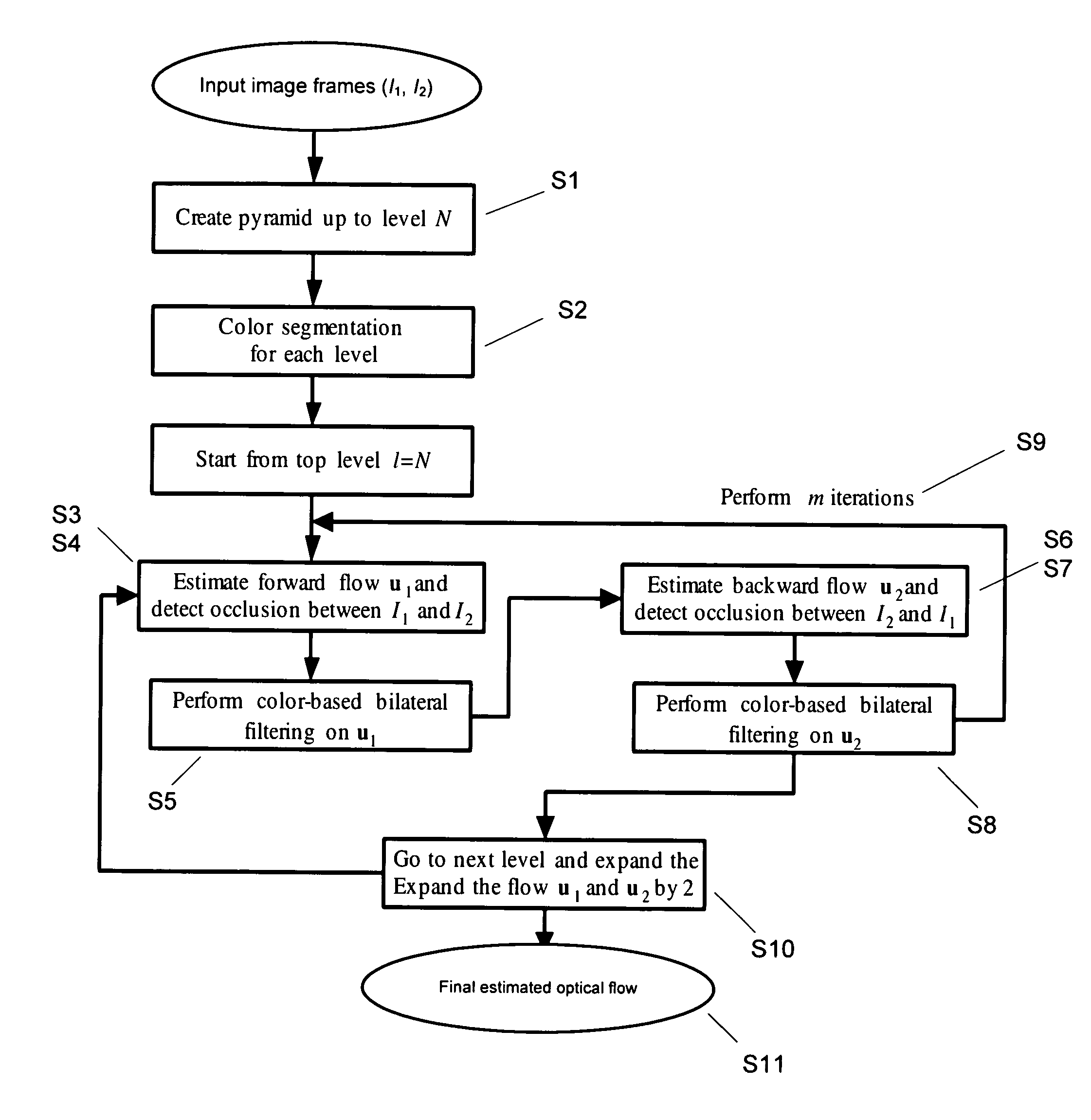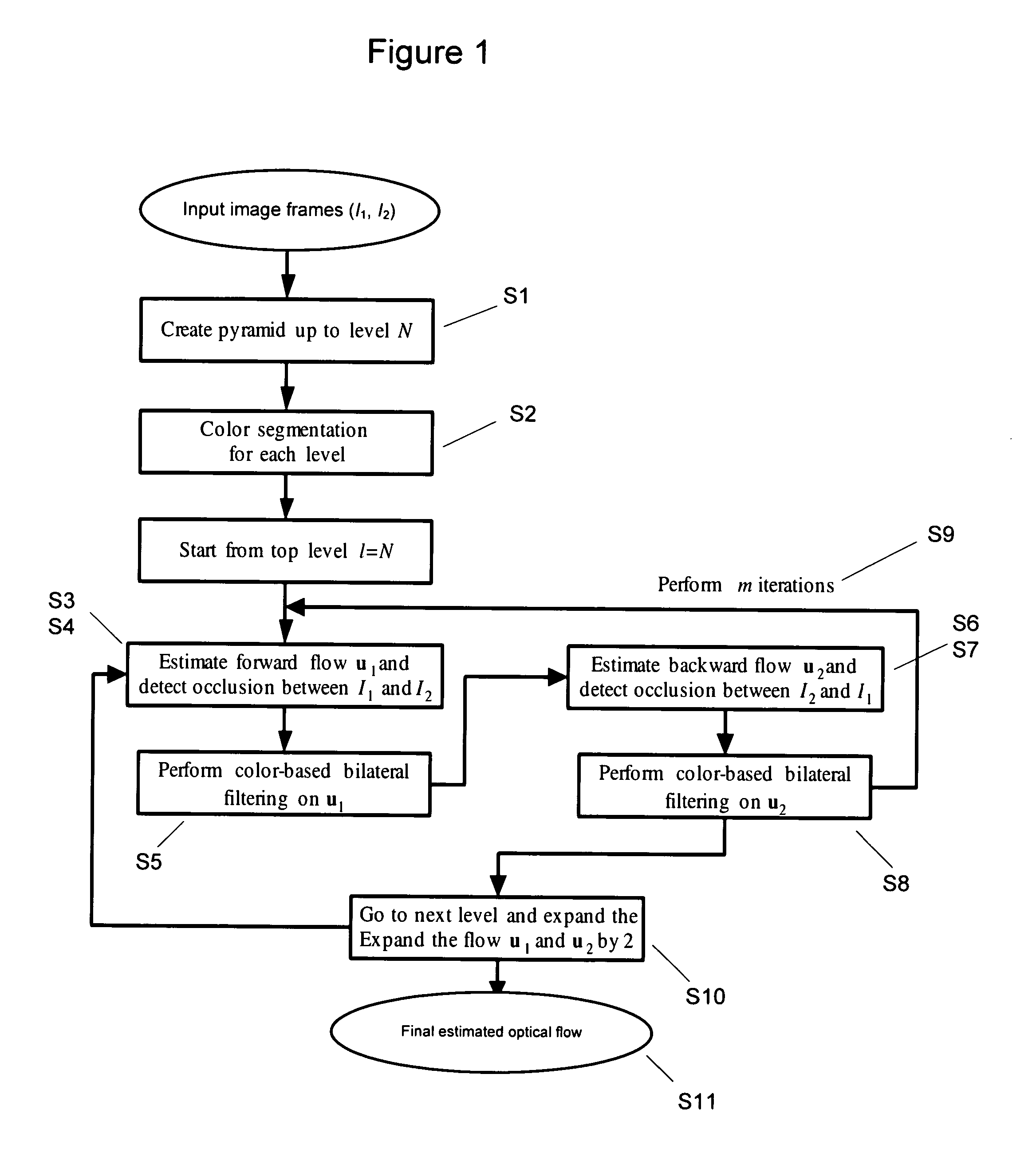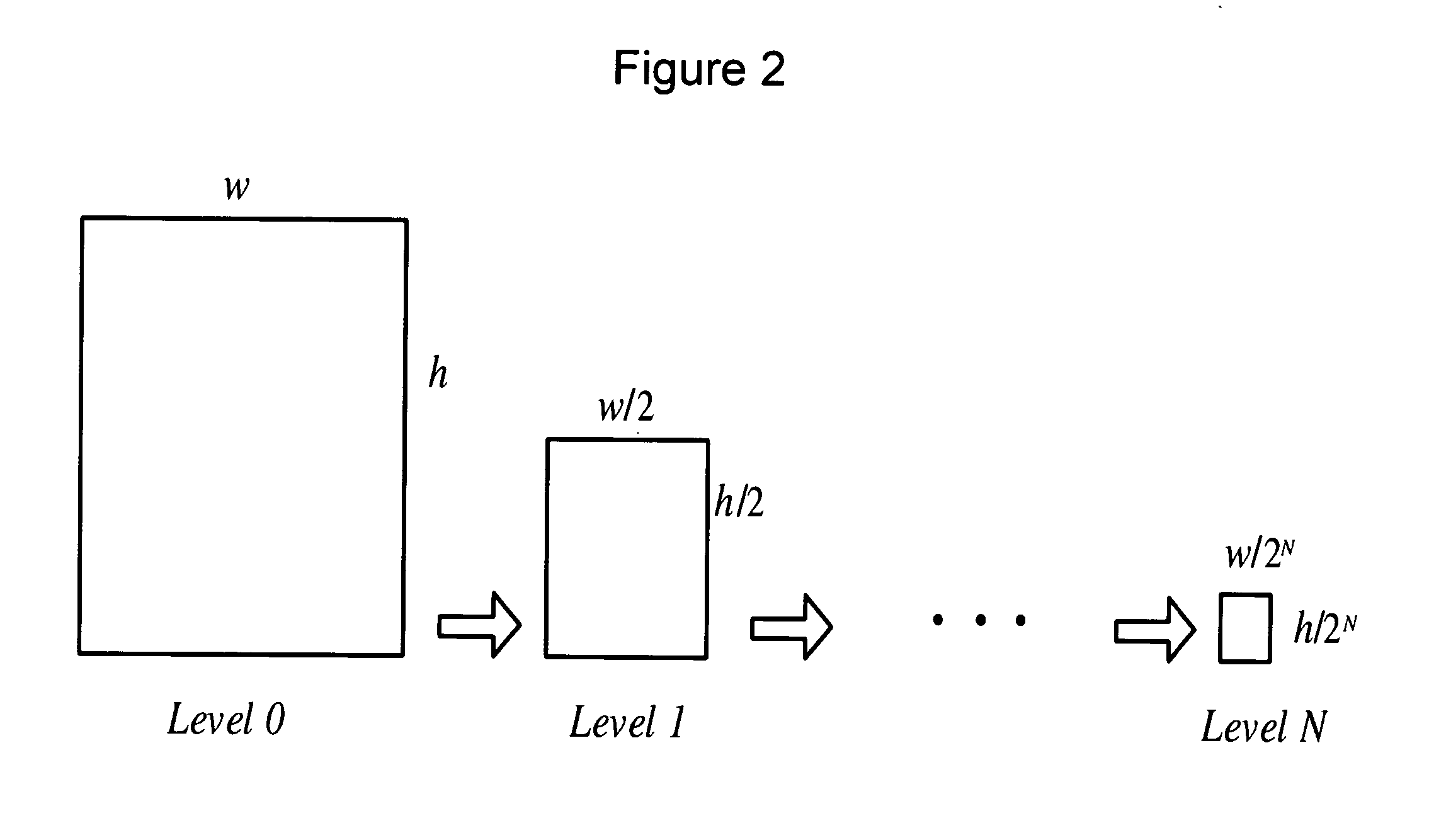Method and system for segment-based optical flow estimation
a segment-based optical flow and segment-based technology, applied in the field of video processing, can solve the problems of not saving bits for others, impracticality of transmission of uncompressed video, and difficulty in using one or two models to describe general scenes, etc., and achieve the effect of saving bits for transmission
- Summary
- Abstract
- Description
- Claims
- Application Information
AI Technical Summary
Benefits of technology
Problems solved by technology
Method used
Image
Examples
Embodiment Construction
[0038] The present invention provides a more efficient optical flow estimation process which includes the use of color segmentation and adaptive bilateral filtering to regularize the flow field to achieve a more accurate flow field. As used herein, the term “optical flow,” includes but is not limited to a technique, parameter, or measure which estimates the motion of one or more objects within a visual representation. Typically, the motion is represented as one or more vectors originating or terminating at pixels between two input images. As used herein, the term “flow field” or “flow vector field” includes, but is not limited to, a collection of 2D motion flow vectors, wherein each 2D motion flow vector corresponds to a pixel in an image.
[0039] According to the present invention, the occlusion is formulated in an energy function of a variational algorithm in order to detect the occlusion areas between the piecewise-smoothed flow fields, which efficiently breaks the spatial coheren...
PUM
 Login to View More
Login to View More Abstract
Description
Claims
Application Information
 Login to View More
Login to View More - R&D
- Intellectual Property
- Life Sciences
- Materials
- Tech Scout
- Unparalleled Data Quality
- Higher Quality Content
- 60% Fewer Hallucinations
Browse by: Latest US Patents, China's latest patents, Technical Efficacy Thesaurus, Application Domain, Technology Topic, Popular Technical Reports.
© 2025 PatSnap. All rights reserved.Legal|Privacy policy|Modern Slavery Act Transparency Statement|Sitemap|About US| Contact US: help@patsnap.com



